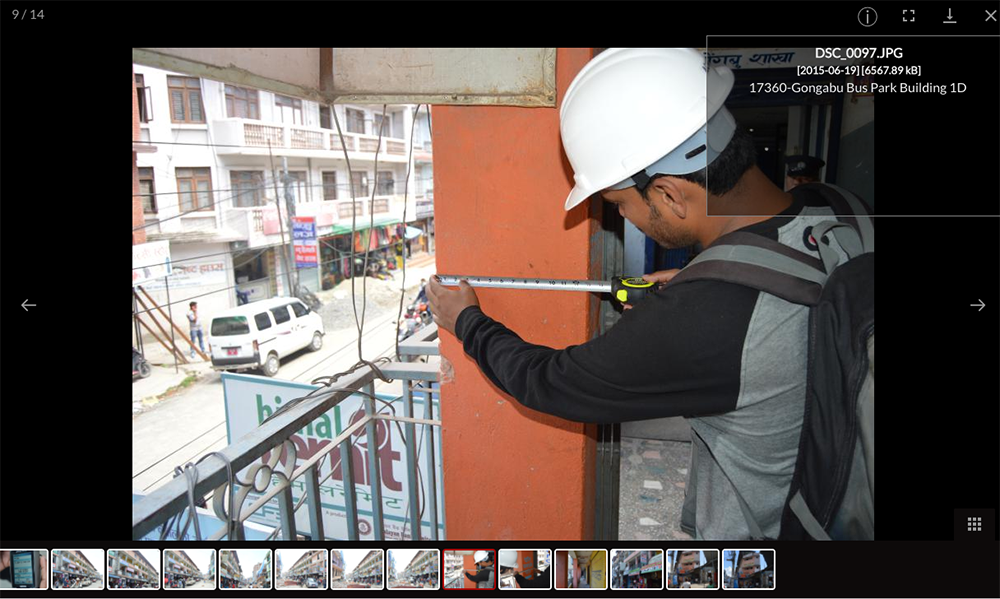DatacenterHub: A Database Resource for NHERI Researchers
Published on September 18, 2018

The DatacenterHub allows researchers to collect and collate valuable photographic evidence from disaster events to provide context for future data analysis.
Engineering researchers regularly compile collections of key parameters and results from their tests and numerical simulations. These compilations may include one or more tables of (mostly) numerical values and are often called databases. These databases can be used to vet numerical algorithms, test hypotheses and analyze trends.
What is it?
DatacenterHub is an NSF-funded platform established in 2014 that enables researchers to access existing research databases and to create their own databases. On it, scientists and educators can find collections of post-earthquake reconnaissance data from reinforced concrete buildings including thousands of photographs and videos experiments on shear walls, RAPID data, bridge data, and more. DatacenterHub is maintained by Purdue University and is based on the HUBzero platform.
What does it accomplish?
DatacenterHub enables researchers to store and share valuable data for the hazard-research community and others. A number of hazard research databases were contributed to the NEEShub (the web interface that preceded DesignSafe-CI) which is no longer in service. Fortunately, NEES databases have been transferred to DatacenterHub to provide continued access. DatacenterHub holds a wealth of K-12 lesson plans and modules. It also holds experimental data that were initially located in the NEEShub project warehouse.
How does it work?
Anyone may search DatacenterHub by clicking Discover on its main page and using the search boxes in the table that follows. Or, users may browse by resource type. All published data can be downloaded. To contribute data, users must first create an account. Accounts are free. Find details at datacenterhub.org.
Is DatacenterHub suitable for longterm use?
DatacenterHub is funded through 2021 (NSF grant #1724728), and plans are underway to make it available past that date. Purdue University and HUBzero are committed to long-term data preservation, as evidenced by efforts to keep these databases available. DatacenterHub also supports BagIt, a hierarchical file packaging format used by the Library of Congress for transfer, storage and preservation of digital content. With BagIt, it is possible to download entire datasets with the click of a button making it easy to archive and transfer any chosen dataset.
Questions?
Contact Santiago Pujol, Professor of Civil Engineering and Academic Director for Research Computing, Purdue University, spujol@purdue.edu.





